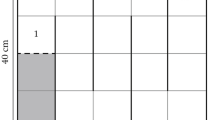Summary
Populations of the Trinidad guppy range from areas with high levels of predation by other species of fish to areas with little or no piscine predation. Previous studies have shown that variation among populations in male coloration can be explained by a balance between female preference for brighter males and natural selection against bright males. High levels of male courtship activity may also increase both predation risk and mating success. Therefore, in high-predation areas, females that mate with males that court frequently as well as those that choose bright males would presumably produce male offspring with low survivorship. Consistent with this variation in natural selection, we observed that females from high-predation populations were less likely to choose bright and frequently courting males than females from low-predation populations. This result supports the hypothesis that female preference is evolving as a character genetically correlated with the preferred male character, in which case higher levels of natural selection acting against the male character should be related to lower levels of female preference.
Similar content being viewed by others
References
Andersson M (1982) Sexual selection, natural selection and quality advertisement. Biol J Linn Soc 17:375–393
Bischoff RJ, Gould JL, Rubenstein DI (1985) Tail size and female choice in the guppy (Poecilia reticulata). Behav Ecol Sociobiol 17:253–255
Breden F, Scott M, Michel E (1987) Genetic differentiation for anti-predator behaviour in the Trinidad guppy, Poecilia reticulata. Anim Behav 35:618–620
Breden F, Stoner G (1987) Male predation risk determines female preference in the Trinidad guppy. Nature 329:831–833
Endler JA (1978) A predator's view of animal color patterns. Evol Biol 11:319–364
Endler JA (1980) Natural selection on color patterns in Poecilia reticulata. Evolution 34:76–91
Endler JA (1982) Convergent and divergent effects of natural selection on color patterns in two fish faunas. Evolution 36:178–188
Endler JA (1983) Natural and sexual selection on color patterns in poeciliid fishes. Env Biol Fishes 9:173–190
Farr JA (1975) The role of predation in the evolution of social behavior of natural populations of the guppy, Poecilia reticulata (Pisces: Poeciliidae). Evolution 29:151–158
Farr JA (1980) Social behavior patterns as determinants of reproductive success in the guppy, Poecilia reticulata Peters (Pisces, Poeciliidae). Behaviour 74:38–91
Heisler IL (1984a) A quantitative genetic model for the origin of mating preferences. Evolution 38: 1283–1295
Heisler IL (1984b) Inheritance of female mating propensities for yellow locus genotypes in Drosophila melanogaster. Genet Res 44:133–149
Hollander M, Wolfe DA (1973) Nonparametric statistical methods. Wiley, New York, pp 503
Houde A (1987) Mate choice based upon naturally occurring color-pattern variation in a guppy population. Evolution 41:1–10
Kirkpatrick M (1982) Sexual selection and the evolution of female choice. Evolution 36:1–12
Kodric-Brown A (1985) Female preference and sexual selection for male coloration in the guppy (Poecilia reticulata). Behav Ecol Sociobiol 17:199–205
Lande R (1981) Models of speciation by sexual selection on polygenic traits. Proc Natl Acad Sci USA 78:3721–3725
Lande R (1982) Rapid origin of sexual isolation and character divergence in a cline. Evolution 36:213–223
Luyten PH, Liley NR (1985) Geographic variation in the sexual behaviour of the guppy, Poecilia reticulata (Peters). Behaviour 95:164–179
Majerus MEN, O'Donald P, Weir J (1982) Female mating preference is genetic. Nature 300:521–523
O'Donald P (1980) Genetic models of sexual selection. Cambridge University Press, Cambridge, pp 250
Reznick D (1982) The impact of predation on life history evolution in Trinidadian guppies: genetic basis of observed life history patterns. Evolution 36:1236–1250
SAS User's Guide: Statistics (1982) SAS Institute, Cary, NC, pp 584
Sokal RR, Rohlf FJ (1981) Biometry. WH Freeman, San Francisco, pp 859
Sullivan BK (1983) Sexual selection in Woodhouse's toad (Bufo woodhousei). II. Female choice. Anim Behav 31:1011–1017
Author information
Authors and Affiliations
Rights and permissions
About this article
Cite this article
Stoner, G., Breden, F. Phenotypic differentiation in female preference related to geographic variation in male predation risk in the Trinidad guppy (Poecilia reticulata). Behav Ecol Sociobiol 22, 285–291 (1988). https://doi.org/10.1007/BF00299844
Received:
Accepted:
Issue Date:
DOI: https://doi.org/10.1007/BF00299844




